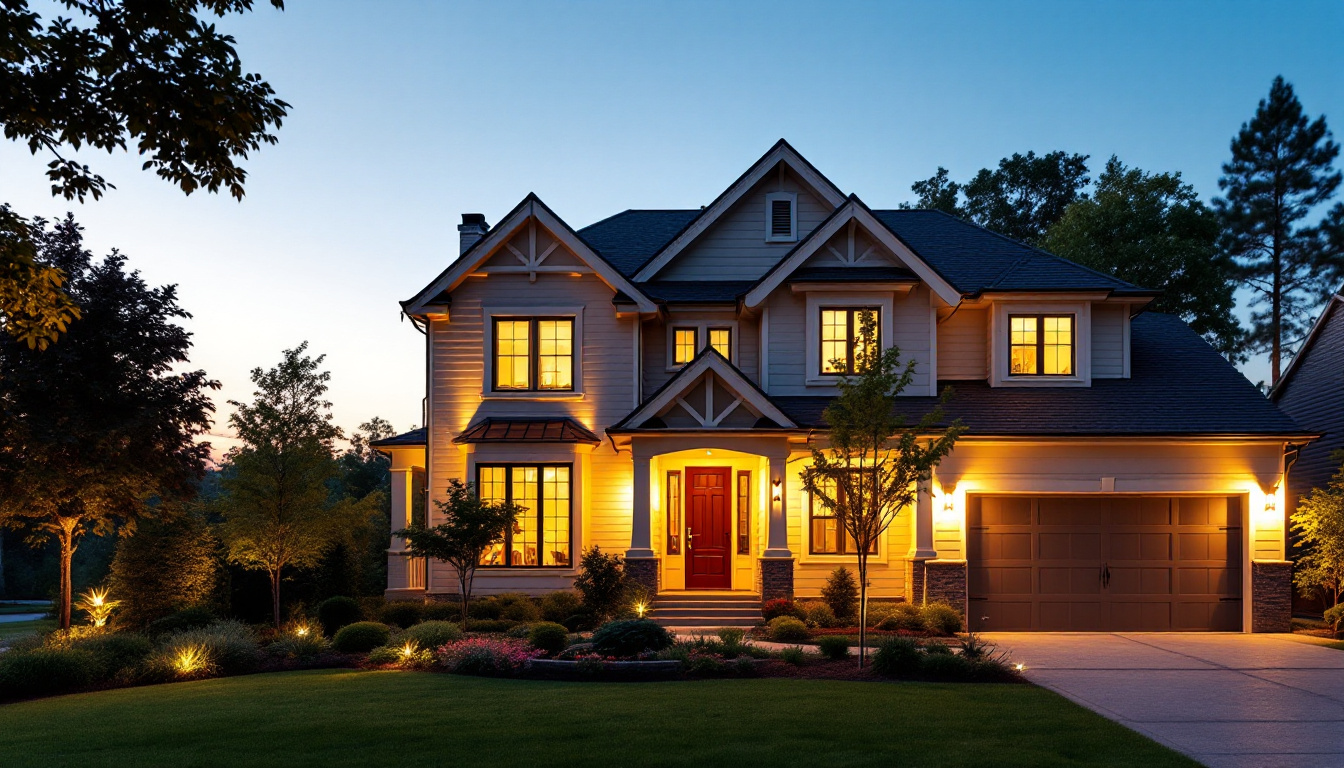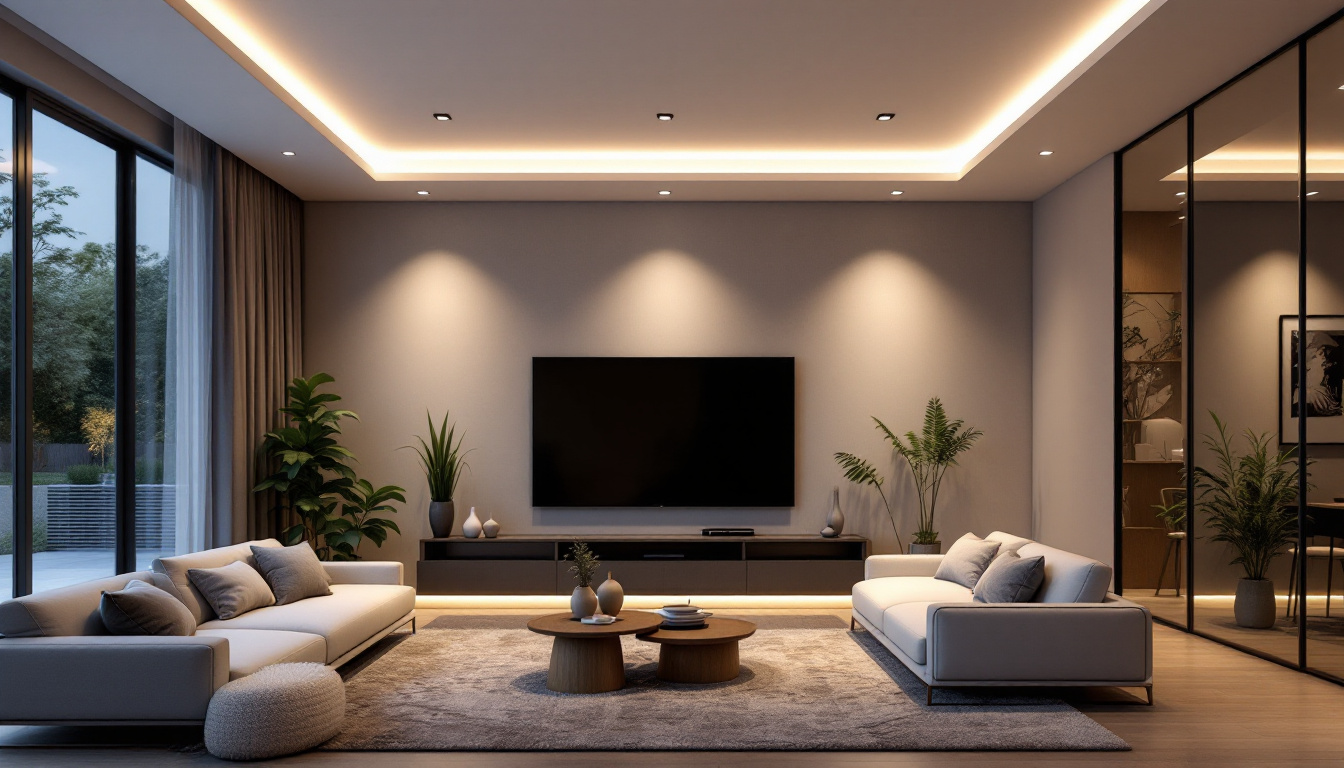
In the ever-evolving world of lighting, the choice of bulb types can significantly impact both the quality of illumination and the overall efficiency of a project. For lighting contractors, understanding the nuances of various bulb types is essential to avoid common pitfalls. This guide will delve into the different types of bulbs available, their applications, advantages, and potential drawbacks, ensuring that contractors can make informed decisions for their projects.
Lighting contractors encounter a variety of bulb types, each designed for specific applications and environments. The most common types include incandescent, fluorescent, halogen, LED, and newer technologies like smart bulbs. Each of these has its unique characteristics, making it crucial to understand their differences.
Incandescent bulbs have been a staple in lighting for decades. They produce light by heating a filament until it glows, providing a warm and inviting ambiance. However, their energy efficiency is significantly lower compared to newer technologies.
One of the primary drawbacks of incandescent bulbs is their short lifespan, typically around 1,000 hours. This can lead to higher replacement costs over time, especially in commercial settings where lighting is used extensively. Furthermore, the heat generated by these bulbs can contribute to increased cooling costs in warmer climates. Despite these limitations, many people still prefer incandescent bulbs for their warm light quality, which is often described as more pleasing and natural compared to cooler alternatives. This has kept them popular in residential applications, particularly in living rooms and dining areas where ambiance is key.
Fluorescent bulbs operate by passing an electric current through a gas, causing it to emit ultraviolet light, which then excites a phosphor coating inside the bulb to produce visible light. They are more energy-efficient than incandescent bulbs and have a longer lifespan, averaging around 10,000 hours.
Despite their advantages, fluorescent bulbs can present challenges. They often require a ballast to regulate the current, which can add complexity to installation and maintenance. Additionally, the light quality can be perceived as harsh, and flickering can occur, particularly in colder temperatures. However, advancements in technology have led to the development of compact fluorescent lamps (CFLs) that are designed to fit into standard light fixtures, providing a more versatile option for consumers. These bulbs are also available in various color temperatures, allowing users to select a light quality that best suits their needs, from warm whites to cooler daylight tones.
halogen bulbs are a type of incandescent bulb that contains halogen gas, allowing them to operate at higher temperatures and produce more light per watt. They are known for their bright, white light and excellent color rendering capabilities.
However, halogen bulbs also have a relatively short lifespan of about 2,000 hours and can generate significant heat. This necessitates careful placement to avoid overheating and potential fire hazards. Contractors should also consider the energy consumption, as halogen bulbs are less efficient than LEDs. Despite these concerns, halogen bulbs are often favored for their ability to provide focused lighting, making them ideal for task lighting in kitchens or workspaces. Additionally, their dimmable nature allows for flexibility in creating different atmospheres, which can be particularly appealing in residential settings where mood lighting is desired. As a result, many homeowners and designers still incorporate halogen fixtures into their lighting plans, balancing their benefits against the drawbacks of energy use and heat generation.
Light Emitting Diodes (LEDs) have revolutionized the lighting industry with their energy efficiency, longevity, and versatility. They are rapidly becoming the go-to choice for both residential and commercial applications.
LED bulbs can last up to 25,000 hours or more, significantly reducing replacement costs and maintenance efforts. They consume considerably less energy than traditional bulbs, leading to lower electricity bills and a reduced carbon footprint.
Moreover, LEDs are available in a wide range of color temperatures and designs, making them suitable for various applications, from task lighting to decorative fixtures. Their durability also means they are less likely to break, making them ideal for high-traffic areas.
Despite their many advantages, LEDs are not without their challenges. The initial cost can be higher compared to traditional bulbs, which may deter some clients. Additionally, the quality of light can vary significantly between manufacturers, leading to potential dissatisfaction if not carefully selected.
Another consideration is the dimming capability of LED bulbs. Not all LEDs are compatible with existing dimmer switches, which can lead to flickering or reduced performance. Contractors must ensure that the dimmers used are compatible with the specific LED products being installed.
As technology continues to advance, smart bulbs have emerged as a popular option for both residential and commercial lighting. These bulbs offer the convenience of remote control and automation, allowing users to adjust brightness, color, and even scheduling through smartphone apps.
Smart bulbs provide unparalleled flexibility and control over lighting environments. They can be integrated with home automation systems, allowing for seamless interaction with other smart devices. This can enhance energy efficiency by automatically turning off lights in unoccupied rooms or adjusting brightness based on natural light levels.
Furthermore, the ability to customize colors and lighting scenes can create unique atmospheres for various occasions, adding value to residential projects. For contractors, this can be a selling point, appealing to tech-savvy clients looking for modern solutions.
However, smart bulbs also come with their own set of challenges. Connectivity issues can arise, particularly in larger homes or commercial spaces with Wi-Fi dead zones. Additionally, the reliance on technology means that any software updates or failures can disrupt functionality.
Moreover, the initial investment for smart bulbs can be significantly higher than traditional options, which may not align with every client’s budget. Contractors should be prepared to educate clients on the long-term benefits to justify the upfront costs.
With so many options available, selecting the right bulb type for a project can be daunting. Several factors should be considered to ensure the best choice is made for both functionality and aesthetics.
The first step in choosing the right bulb is to assess the specific application. Different environments require different lighting solutions. For instance, task lighting in a kitchen may benefit from bright, white LED bulbs, while a cozy living room may call for warm incandescent or halogen lighting.
Additionally, consider the purpose of the lighting. Is it for ambiance, security, or functional tasks? Understanding the primary use will guide the selection process and help avoid pitfalls associated with inappropriate lighting choices.
Energy efficiency is a crucial factor in today’s lighting design. Clients are increasingly conscious of their energy consumption and the associated costs. Choosing energy-efficient bulbs, such as LEDs, can not only reduce electricity bills but also contribute to sustainability goals.
Contractors should also be aware of local regulations and incentives related to energy-efficient lighting. Many regions offer rebates or tax incentives for using energy-efficient products, which can be a selling point when discussing options with clients.
Understanding client preferences and budget constraints is vital in the decision-making process. Some clients may prioritize aesthetics and be willing to invest in higher-end options, while others may focus solely on cost-effectiveness.
It’s essential to communicate the benefits and drawbacks of each bulb type clearly, helping clients make informed decisions that align with their needs and budget. Providing a range of options can also facilitate discussions and lead to more satisfactory outcomes.
Proper installation is crucial for ensuring optimal performance and longevity of lighting fixtures. Each bulb type may require specific considerations during installation to avoid common pitfalls.
When installing incandescent and halogen bulbs, it is essential to handle them carefully, as they can be sensitive to oils from the skin. Using gloves or a cloth to avoid direct contact can help extend their lifespan. Additionally, ensure that fixtures are rated for the wattage being used to prevent overheating.
Proper ventilation is also critical, especially for halogen bulbs, which can generate significant heat. Ensure that fixtures are designed to dissipate heat effectively, reducing the risk of fire hazards.
Fluorescent bulbs require specific ballasts for operation, and it is crucial to ensure compatibility between the bulb and ballast. During installation, double-check that the ballast is functioning correctly to avoid flickering or failure.
When replacing fluorescent tubes, it is advisable to turn off the power before handling the bulbs, as they can be fragile. Proper disposal of old fluorescent bulbs is also important, as they contain small amounts of mercury.
For LED installations, ensure that the fixtures are compatible with the specific LED products being used, particularly when it comes to dimming capabilities. Many LED bulbs are designed to work with standard fixtures, but some may require specific drivers or transformers.
When installing smart bulbs, follow the manufacturer’s instructions carefully. Ensure that the Wi-Fi network is strong enough to support the smart features, and consider the placement of the bulbs to maximize connectivity. Educating clients on how to use their smart lighting systems can enhance their experience and satisfaction.
As the lighting industry continues to evolve, understanding the various bulb types and their applications is essential for lighting contractors. By familiarizing themselves with the advantages and challenges associated with each type, contractors can avoid common pitfalls and make informed decisions that benefit their clients.
From traditional incandescent bulbs to cutting-edge smart technology, each option has its place in modern lighting design. By considering factors such as application, energy efficiency, and client preferences, contractors can ensure they select the most appropriate solutions for their projects.
Ultimately, the goal is to create spaces that are not only well-lit but also functional, aesthetically pleasing, and energy-efficient. With the right knowledge and approach, lighting contractors can navigate the complexities of bulb types and deliver exceptional results for their clients.
Ready to elevate your lighting projects with the best in spec-grade lighting? Look no further than LumenWholesale. Our commitment to quality and affordability ensures you have access to a vast selection of top-tier lighting products at wholesale prices that simply can’t be beaten. Say goodbye to the middleman and hello to cost savings, free shipping, and the convenience you deserve. Don’t compromise on your lighting needs—choose LumenWholesale for Wholesale Lighting at the Best Value and make your next project shine.

Explore the advantages and drawbacks of canister lighting for contractors.

Discover essential compliance guidelines and expert tips for lighting contractors working on outdoor house projects.

Explore the transformation of recessed lighting costs over the years in this insightful article.

Discover essential tips and insights for lighting contractors seeking reliable light bulb suppliers.